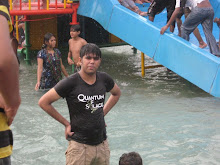

In Bangladesh most people still buy their daily household food requirments from markets located in their neighbourhood. There are fish markets, meat markets, vegetable, fruit markets and small shops selling other grocery items. They are all close to each other. ar, quite close to each other. Fish and vegetables are also sold by travelling vendors who come to your door step. Near the market there are general stores where you can buy refirgerated materials like milk, drinks etc. In the markets one has to bargain the price.
Bangladesh has always been famous throughout the subcontinent for its sweets. In the olden days there were some famous names like Maranchand and Kalachand sweets. Now their next generations are carrying on the business as Maranchand and sons and Maranchand and grand sons etc. There are some new sweet shops now which are popular like Alauddin (Green Road), Muslim sweets (Shegun Bagicha and Shanti nagar), Ambala (Dhanmondi R/A) etc. They all sell the standard sweets like raw-shoh-gohl-la, shawn-desh, chawm chawm, kaalo jaam, raw-shoh maalaai, mishti doi, praan hara, jilebi etc. For all these sweets the main ingredients are milk and sugar. In some new upmarket shops in Gulshan area in Dhaka they have started experimenting and developing modified versions of these sweets to suit the modern palate, who are used to western sweets

Bangladesh is also famous for its street food though foreigners should be careful becasue of the hygiene maintained by these street vendors. It is easy to get upset stomach and diarrhoea if you are not used to spicy food. People have also been known to have come back from Bangladesh with typhoid or jaundice because of having taken street food. When trying out street food ensure the following:
(a) the place is cleand
(b) the food is prepared in front of you (dont take pre-prepared food)
(c) the person preparing the food is wearing clean clothes and his body and hands look clean. Watch him for sometime and observe him - how he handles his food, where he wipes his hand, what else he does while preparing the food etc.
(d) how the food is served
(e) what type of water is used for cleaning utensils and oil for fying

Shingara is the most common snack. It is made from ruff puff pastry filled with vegetables or meat and deep fried, called samosa in the west. Tasty and filling
Daal-puriSmall saucer sized pancake with lentil stuffing and deep fried
Paw-raa-thaaMedium sized, either round or square shaped bread made from ruff puff pastry and deep fried. Called roti paratha in the west.
Mugh-laai paw-raa-thaaParatha with stuffing like eggs or minced meat
Nim-keeSmall triangular shaped flat bread made from ruff puff pastry
Loo-chiSmall saucer sized pancake with hollow inside - eaten with fried potatoes (alu bhaji), omelette or other cooked dishes
Chawt-poh-teeChick peas mixed with different spices. Phuch-kaaSmall pancakes (about 1.5 inch diameter) with hollow inside. A hole is made on top middle to pour spiced chawt-paw-tee mix and turmetic juice. Put in mouth one by one.
These kind of foods are harmful for health and everybody should avoid eating such kind of food.....









